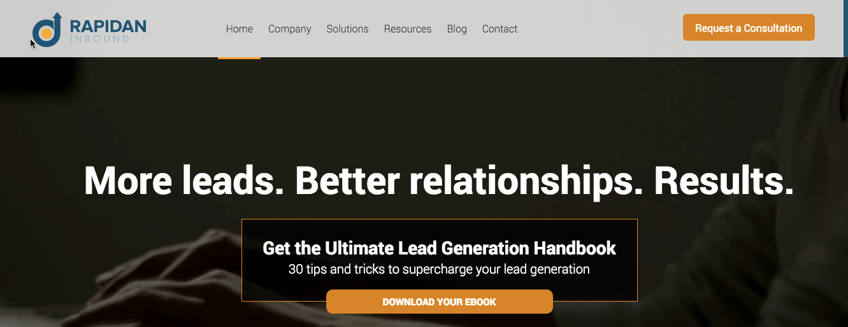 One of the most interesting findings in HubSpot's 2015 State of Inbound was that business leaders don't see much value in social selling. Despite all the hype surrounding social selling, only 8% of respondents identified social selling as a "top sales priority." (Cue the sound of crickets chirping.) Social selling has become a cottage industry - there is no shortage of "LinkedIn experts" offering to help optimize your social selling efforts. Despite all of the talk about social selling, I wonder how many people are actually closing deals as a result of social selling. Here's my opinion on what's really behind the social selling hype.
One of the most interesting findings in HubSpot's 2015 State of Inbound was that business leaders don't see much value in social selling. Despite all the hype surrounding social selling, only 8% of respondents identified social selling as a "top sales priority." (Cue the sound of crickets chirping.) Social selling has become a cottage industry - there is no shortage of "LinkedIn experts" offering to help optimize your social selling efforts. Despite all of the talk about social selling, I wonder how many people are actually closing deals as a result of social selling. Here's my opinion on what's really behind the social selling hype.
What social selling isn't
Far too many social sellers have simply transferred annoying sales practices from one medium to another. Having learned that cold calling is producing diminishing returns, they now use a similar approach on LinkedIn. We've all seen it - you receive a request to connect on LinkedIn. You accept. Faster than the beat of a hummingbird's wings, you receive a LinkedIn message from your new connection. It's a generic sales pitch with absolutely no context to your unique situation. I'm fairly inclusive about accepting connection requests, but this "social selling" tactic is making me rethink that.
I have had numerous lead generation "experts" use this approach with me. A minimal amout of research (clicking to my web site) would show that my business helps other businesses generate leads with inbound marketing.
30 seconds of research would allow these "social sellers" to qualify me out of their sales process, saving us both time. I would really be interested to see if anyone actually buys from these people. What they've done is is simply transferred annoying sales practices from the telephone to LinkedIn. I think the prevalence of these practices has a lot to do with the fact that business leaders don't attach much importance to social selling.
What social selling should be
In my opinion, social selling is more of a tool than a sales channel. I'm not saying that you shouldn't use social media to generate sales leads, but you need to be respectful and helpful with your social sales outreaches. Here are few tips for your outbound social selling.
- ALWAYS use context in your outbound social selling. Do research on the person you're approaching and their company and explain how your solution could potentially help them.
- Get to the point! People are busy and don't have time to read your 5,000 word capabilities statement. If someone approaches me and briefly shows me that they have taken the time to research me and my company, I try to at least give them the courtesy of a response. Unfortunately, most people that approach me dont' do that.
- Be respectful. Cyber stalking is scary and is not going to close deals for you.
Your social selling is significantly more effective when the person you're approaching has some awareness of you and your company when you're reaching out.
How to use social selling as a tool
In my opinion, social media is best used as a tool to suppport your integrated sales and marketing efforts. The concept behind social media is that it is a two-way communications tool in which participants can choose subjects and people to interact with. If you respect those principle and earn trust, selling will be a natural progression of the communications process. Here are some suggestions on how you can gain trust and build relationships to help you sell.
- Use social media to promote your content. If you're not producing content that is helpful to your customers and prospects, you should be. Promote your content on your personal and company social media accounts. It's up to your social followers to decide whether to access it or not. The best way to get people engaged with your content is to make it good. Unhelpful or unprofessional content will hurt you more than help you. In promoting your content, remember to be respectful. Don't be that person who ruins LinkedIn Groups with self-promotional spam.
- Use social media to start relationships. If you want to develop a relationship with a person or a company, a good place to start is to follow them on their social media accounts. Give to get. Rather than send an unsolicited sales ptich, try re-tweeting or sharing shome of their content. Believe me, that will get you noticed by someone who is promoting content on social media. They will be much more likely to engage with you than the person who immediately goes for the kill with the spammy sales pitch.
- Use social media to research and qualify prospects. The more focused you are in your sales and marketing efforts you are, the more successful you will be. Rather than spray and pray, used social media to learn about your prospects and tailor your communications with them. If nothing else, view a prospect's LinkedIn profile and check out their website before you make any sales approach.
- Be courteous. Monitor your social media profiles and thank people who share your content, favorite tweets that you like and show people that you're someone worth having a relationship with.
If you view social selling as an immediate revenue generation tactic, you will invariably crash and burn. However, if you're helpful and respectful on social media, selling should come as a natural consequence to building a meaningful business relationship with people and businesses. Want to learn how you can use social selling in your business? Schedule a free consultation with us.








